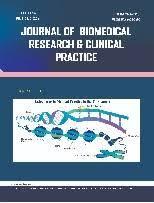Relationship between the Symptoms of Posttraumatic Stress Disorderand Emotional Behaviours of Children who Survived Armed Conflictsin North-Eastern, Nigeria
Keywords:
Armed conflict, Children, Emotion and Behaviour, Posttraumatic stress disorderAbstract
The study evaluated the relationship between the symptoms of Posttraumatic (PTSD) stress disorder as a mental health
consequence of traumatic events on children's emotional and behavioural state in Nigeria. A consecutive sampling
method was employed to interview the parents, teachers and 117 pupils in a non-conventional school. A face-to-face
interview was conducted using Socio-demographic questionnaire; Strength and Difficulties Questionnaire (SDQ) and
Children's Revised Impact of Event Scale (CRIES-13) to collect data in two villages in North Eastern Nigeria, who had
survived the 2018/19-armed attacks. The interview was conducted in each class together with the respective teachers of
each child accompanied by a parent or blood relative to ensure privacy. The mean age of the 117 pupils was 9.87±2.85.
Twelve per cent and 27% of the children had borderline/ abnormal difficulties on the Total Difficulty subscale of the SDQ
as rated by parents and teachers, respectively. About 26 % of 93 pupils 8 years and above had symptoms of PTSD. The
parents ranting on SDQ showed a weak positive correlation between: intrusive symptoms of PSTD and expression of
emotion of the pupils (r=0.283, p=0.006); Arousal symptoms of PTSD and emotion (r=0.261, p=0.012), peer relationship
problems (r=0.255, p=0.014), and total difficulty scale (r=0.354, p=0.001); but between arousal and strength scale, the
correlation was weak and negative (r=0.220, p=0.034). On the teachers' rating, there was a weak positive correlation
between the intrusive symptoms of PTSD and emotion (r=0.417, p=0.001), peer problem (r=0.228, p=0.028) and Total
difficulty (r=0.273, p=0.008) subscales; avoidance symptoms with emotion (r=0.364, p=0.001) and arousal symptoms
correlated weakly with emotional (r=0.463, p=001), peer problems (r=0.250, p=0.016) and Total Difficulty (r=0.331,
p=0.001) subscales. The study revealed a correlation between the various symptoms of PTSD and the children's emotion
and behaviours as a result of the traumatic event.





